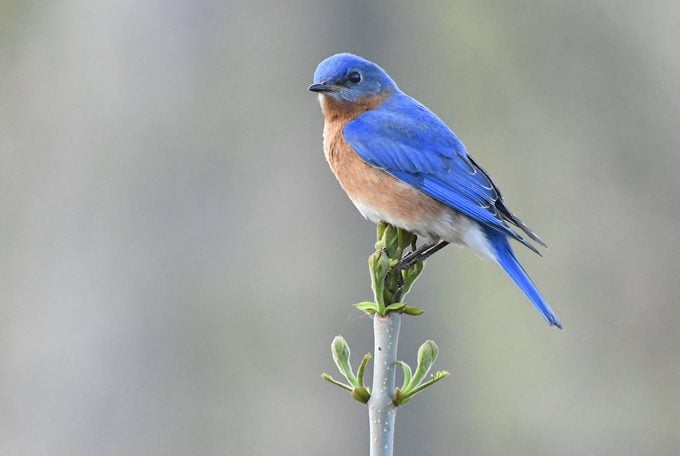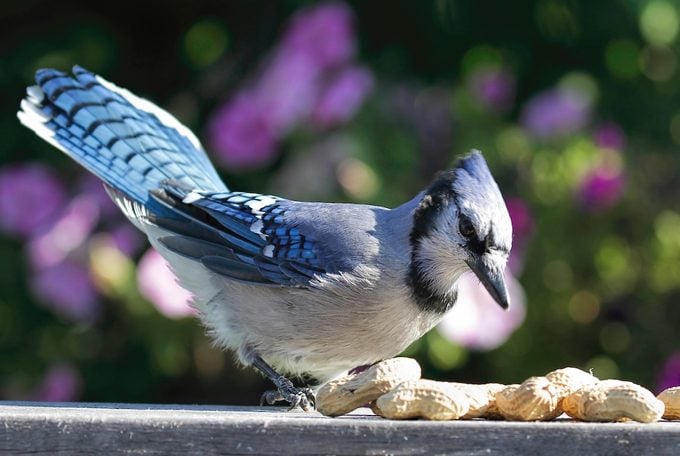Bluebird vs Blue Jay: How to Tell the Difference
Updated: Jan. 26, 2022
With similar names and similar colors, these two bird species are often confused. Here's how to tell the difference between a bluebird vs a blue jay.
What’s your favorite blue bird? Surprisingly, there are many blue colored birds out there. Both bluebirds and blue jays have blue feathers and blue in their names, so they’re often mixed up. But it’s actually pretty easy to tell the difference between a bluebird vs a blue jay. Here’s what to look for in your backyard.

Eastern Bluebirds
Eastern bluebirds are smaller songbirds vs blue jays, about 7 inches, with a blue head, back and wings, a rusty-orange breast and a white belly. Females have more subdued colors. They will visit your yard for mealworms and suet feeders, as well as berries in winter. Follow these tips to attract bluebirds. Like blue jays, eastern bluebirds are present year-round in the eastern United States. Their range extends north in summer. In the Rocky Mountains and beyond, look for mountain and western bluebirds.
Eastern bluebirds prefer wide open spaces like meadows or agricultural fields. You’ll most likely spot them sitting on posts, power lines or tall vegetation. Bluebirds are cavity nesters, and they will use nest boxes. Here’s how to make a DIY bluebird house.
“Eastern bluebirds are so beautiful and entertaining. My husband and I love feeding them and watching them hop around our rural yard,” says Lucinda Moriarty of East Hampton, Connecticut. If you see a bluebird, here’s what it means.

Blue Jays
Much larger than Eastern bluebirds, blue jays measure 11 to 12 inches. Like the bluebirds, they have blue backs, but also look for a gray breast, robust bill, and a crest, or pointy tuft of head feathers. Males and females are nearly identical.
One way to tell these difference between bluebirds vs blue jays is by listening. The jays make their presence known in the backyard with raucous squawks. It’s as though they like attention and don’t take kindly to being ignored! Jays eagerly raid bird feeders for sunflower seed and are especially fond of peanuts. “Even though they are kind of rowdy, I enjoy putting peanuts out for them. And blue is my favorite color!” says Karen Larsen of Viborg, South Dakota.
Among the most familiar fliers in the Corvid family, blue jays live year-round in the eastern U.S. and parts of southern Canada. They’re also expanding westward. “The blue jays I see have never been anything but boisterous, active and protective. They announce the filling of the feeders and warn of the impending arrival of a hawk,” says Phyllis Schweinzger of Elkhart, Indiana.
In western parts of the country, look for Steller’s jays and California scrub-jays.




















